Sanny checks out the Giant Reign E+1 Pro – a long travel, 650B wheeled, full suspension ebike from Giant.
- Price: £4,999
- From: giant-bicycles.com
- Size tested: Large
- Period tested: 3 months
As one of the largest manufacturers of bicycles in the world, Giant is a very big name in the cycling industry. With sales in more than 50 countries and annual revenue approaching $2 billion, it is fair to say that they live up to their name. Despite their size, they have a strong track record in driving innovation. Compact road frames? Giant were at the head of the charge. First mass produced carbon road frame? Yup, that was Giant too. Suspension that actually delivered on the promise of efficient power transfer? That would be the Maestro system introduced nearly 15 years ago. As such, when Giant throw their hat in the ring, it pays to take notice, which takes me rather neatly to their first foray into the long travel, full suspension e bike market in the shape of the Reign E+1 Pro.
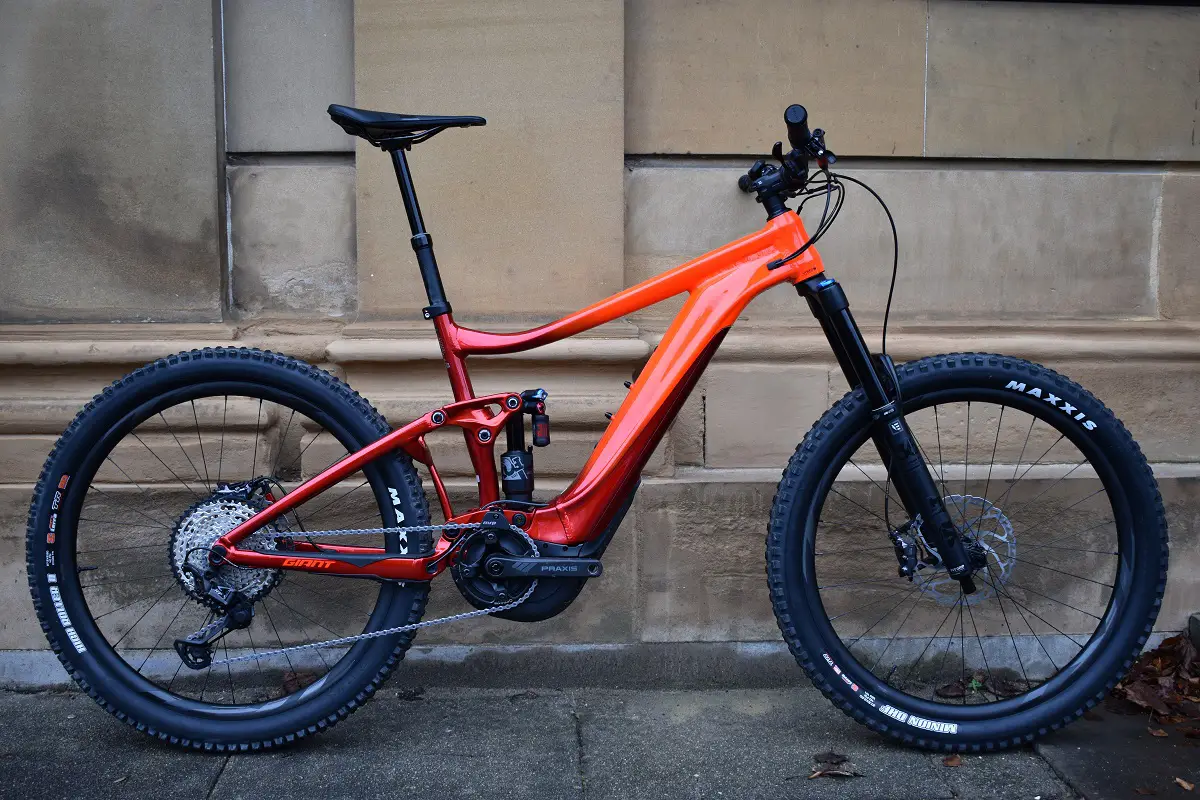
Having previously ridden (and very much enjoyed) testing Giant’s Trance X 29 model back in 2013, I was really keen to see what Giant would bring to the party with their latest ebike design. Fair to say, Giant does not hold back in their description of it: “This premium full-suspension Enduro bike with Hybrid Cycling Technology delivers true all-mountain action and fun that never has to end. Engineered with 160mm of Maestro suspension and high-performance SyncDrive Pro motor technology, it gives you 360 percent tenable pedal assistance so you can conquer steep, technical climbs and enjoy rowdy descents with confidence and control. The lightweight yet super strong ALUXX SL aluminium frame is seamlessly integrated with the updated EnergyPak 500 battery for long-distance trail riding adventures. Connectivity is guaranteed with Giant’s E-bike App, which offers navigation, health and fitness functionalities. And the RideControl ONE gives this trail performer integrated, user-friendly button controls that are simple to use and out of the way.” Phew! And breathe!
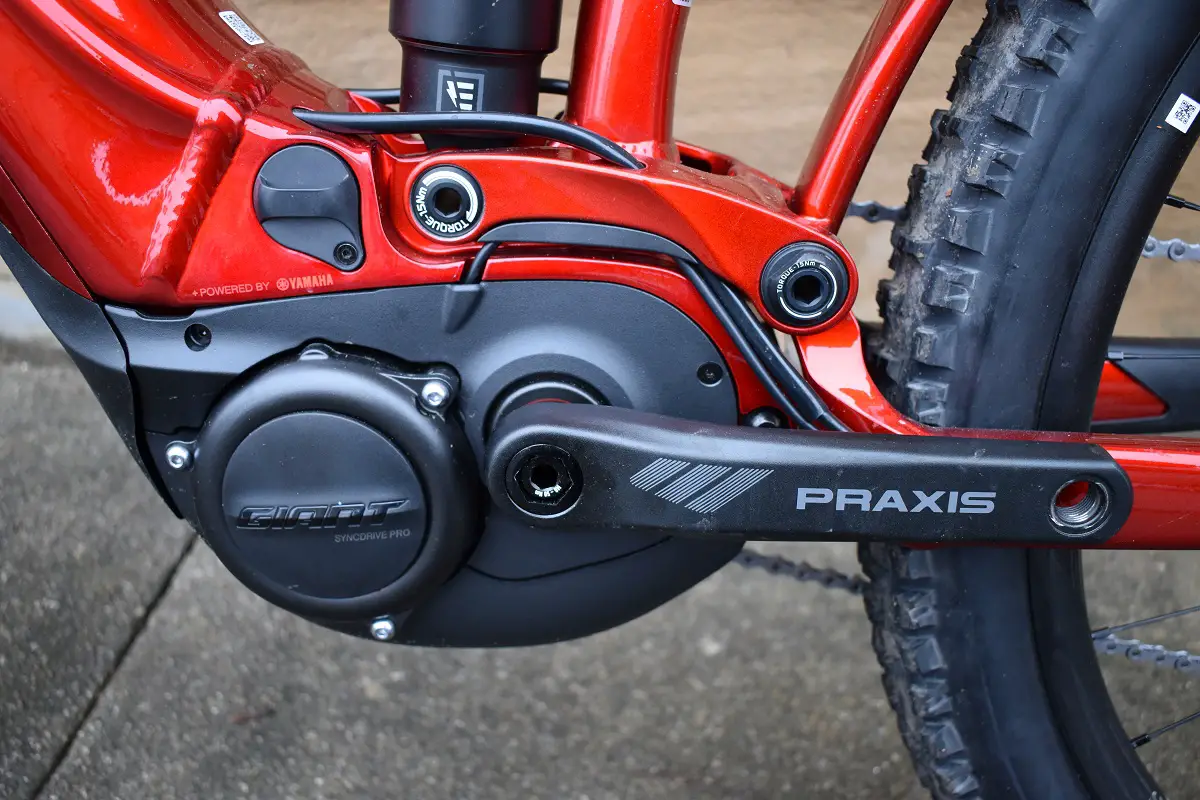
Fundamentally, it is a long travel, 650B wheeled, full suspension bike primarily marketed at the Enduro crowd. Although I would not class myself as an Enduro rider (timed runs just aren’t my bag), my penchant for big mountain riding where I like to go up as much as coming back down means that it is exactly the kind of ebike that I would consider buying, meaning that I was pretty excited when an enormous box landed at Sanny HQ. Manhandling it out of the box was a tad challenging as like so many ebikes, the Reign E+1 Pro isn’t exactly a featherweight. With pedals and my own preferred saddle, it weighs in at a shade over 25 kilogrammes. Next time, I’m cutting the box down the side!
Giant Reign E+1 Pro Specification
Out of the box, it is to my eye a very pretty bike. The two tone orange and red looks fantastic in the real world. Pictures don’t really do it justice. The spec sheet is bang on trend. Giant has opted for a Shimano set up so shifting duties are taken care of by an XT thumb shifter and matching rear mech. The cassette is an SLX 12 speed number with the now almost obligatory dinner plate at the back. When it comes to spending my own hard earned on cassettes, SLX regularly gets my vote so I would not consider it in any way a downgrade. The chain is an ebike specific KMC number while braking duties are taken care of by Shimano’s latest 4 pot XT offerings.
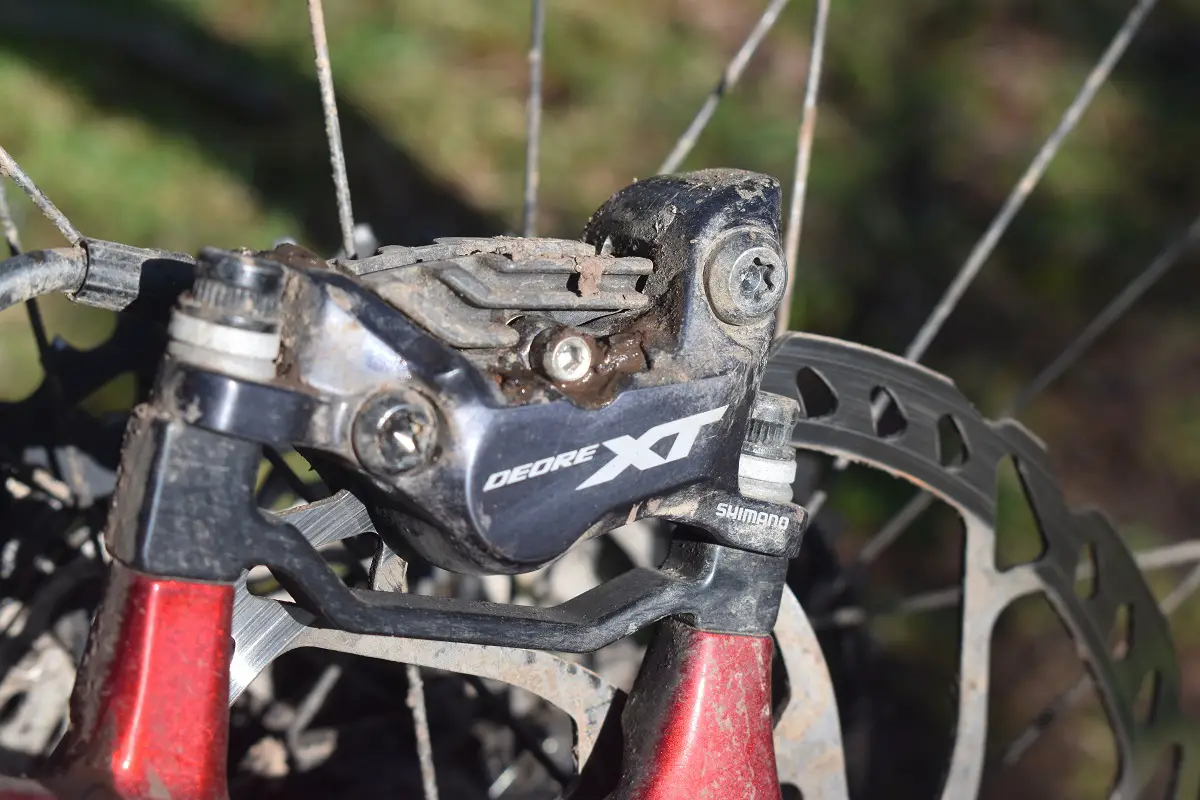
The front ring is a 36 tooth Praxxis cold forged steel number mated to an ebike specific crank. Wheels are Giant’s own brand e-TR1 tubeless ready 30mm inner width aluminium rims mated to matching in-house TR1 hubs. In this age of carbon rims and high end hubs, it is easy to dismiss own brand products but through three months of hard testing in some frankly filthy Scottish conditions, the wheels have stayed true and performed flawlessly. Suffice to say I am very impressed with them as I also am with Giant’s own brand 150mm Contact Dropper post. It goes up and down without fuss, the cable actuated lever design has a nice action to it and there is virtually no side to side play – if only all droppers worked as well! The same can be said for the finishing kit – Giant’s own brand bars, stem, grips and saddle were all very good indeed.
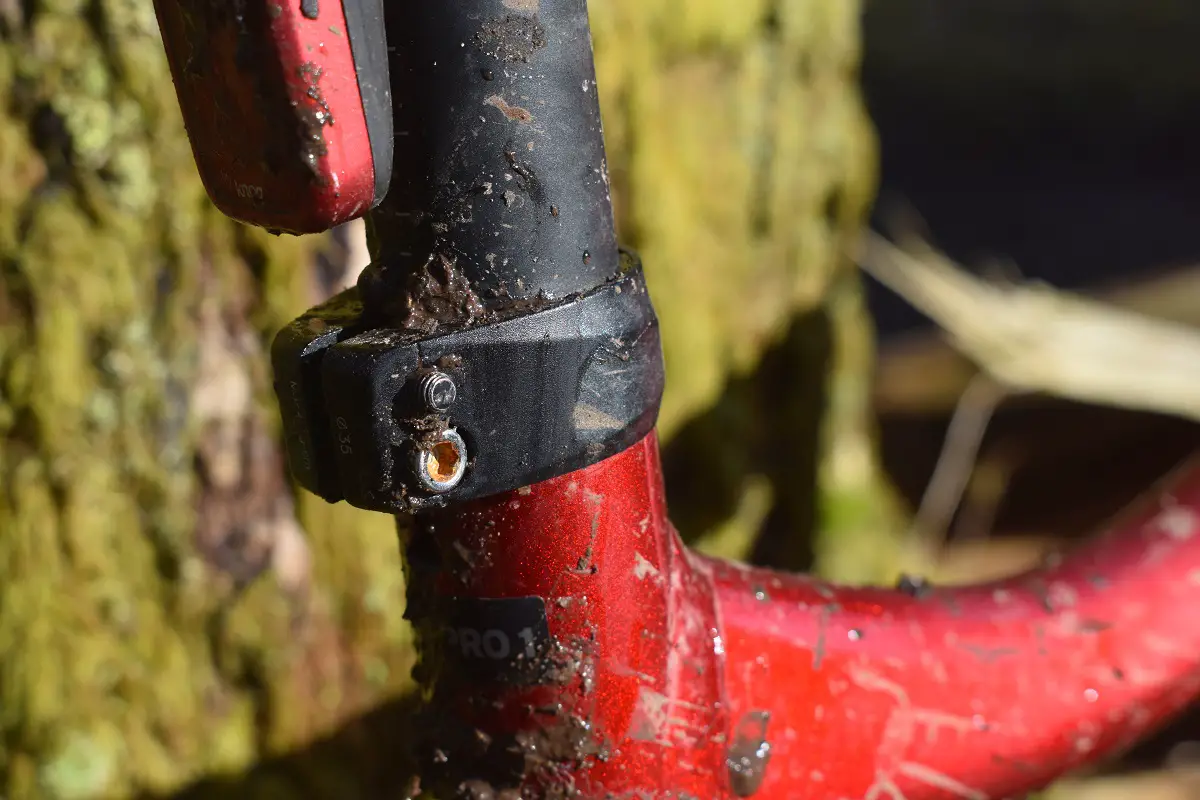
Suspension duties are taken care of by a Fox Float X2 performance rear shock while up front, Fox’s 36 Float Performance 27.5 specific fork is used. The suspension design is Giant’s tried and tested Maestro platform – gradually tweaked and improved over the years, it is testament to Giant’s designers that the basic design has lasted so long. When one thinks of how many changes there have been in suspension design over the years across pretty much every manufacturer, there is something reassuring in design continuity.
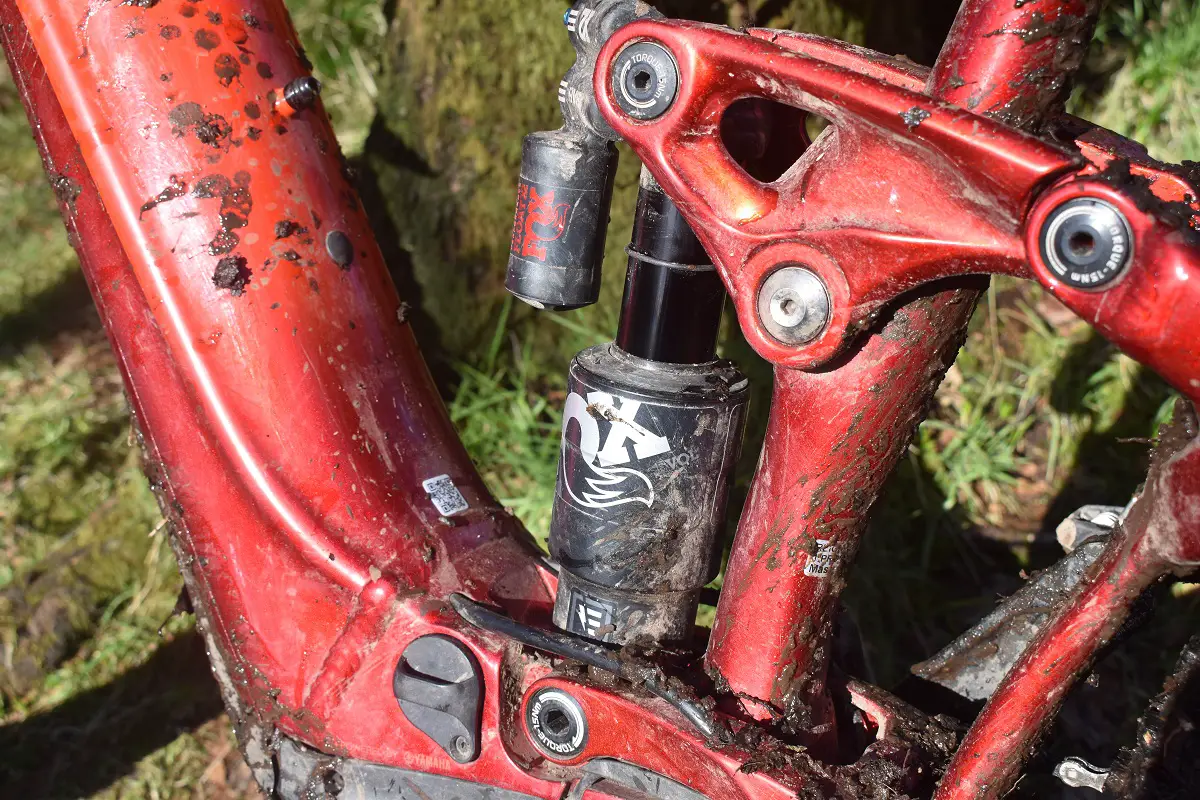
Geometry wise, Giant has gone for 76 degree seat tube angle across the size range and a head tube angle of 64.5 degrees. As tested, the large (19 inch) has a stack of 24.1 inches and a reach of 18.7 inches. The top tube is 25.4 inches while the wheelbase is a rangey 50.2 inches. To coin an oft repeated phrase, long, low and slack are the order of the day.
The frame is constructed using Giant’s ALUXX-SL aluminium frame technology while the Energypak 500 battery is integrated into the downtube. In profile, I think it looks really neat while the width of the downtube means that you can leave your Crud Catcher (other brands are available!) at home as it is wider than that! Cabling follows the now almost obligatory internal routing option. It looks neat and to my delight there was no cable creak and groan during the duration of the test coming from inside the frame. Win!
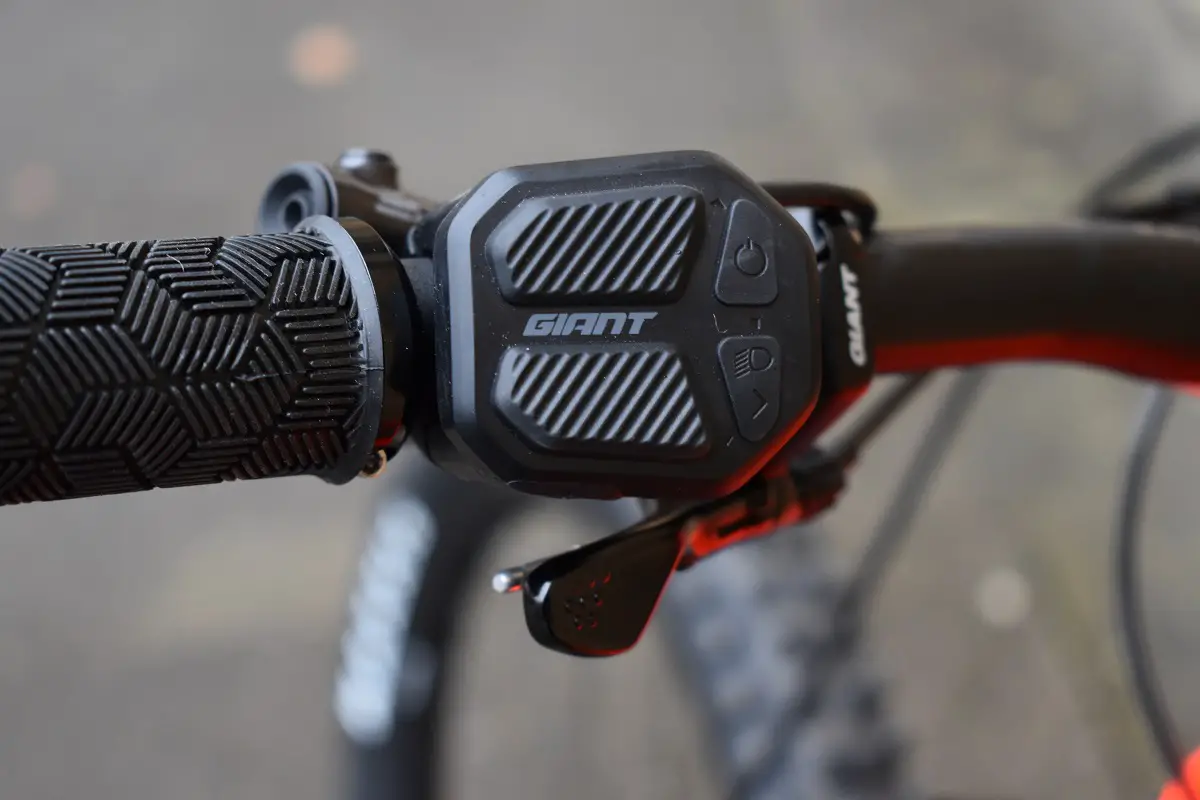
In terms of the motor, Giant takes a different path from other manufacturers and has gone for a Yamaha motor, in this guise it is their top end SyncDrive Pro model, which Giant says has been optimised for a performance oriented riding style. Having ridden both Shimano and Bosch models, I was keen to see how the to-me-at-least unknown Yamaha system would compare. Eschewing unnecessary LED control panels, Giant offers a very simple button control system called RideControl ONE. I am a big fan of simple and clean designs and RideControl delivers on that. Two buttons for up and down, a separate small walk assist button on the side, an on/off switch and (in this disguise at least) a redundant light switch couple with a simple 5 light power indicator to make up the controller. And that is it. No bells. No whistles. Just simplicity.
Charge and Ride
As standard, the Reign E+1 Pro comes suppled with Giant’s Smart Charger. Giant claims that it can charge to 80% within 2.2 hours. In practice, I found this to be reasonably accurate and never found myself wishing that it could charge quicker. The plug in interface feels pretty secure although the cap on the battery cover was a little bit fiddly at times meaning that it would occasionally slip through my fingers as I tried to expose the connector.
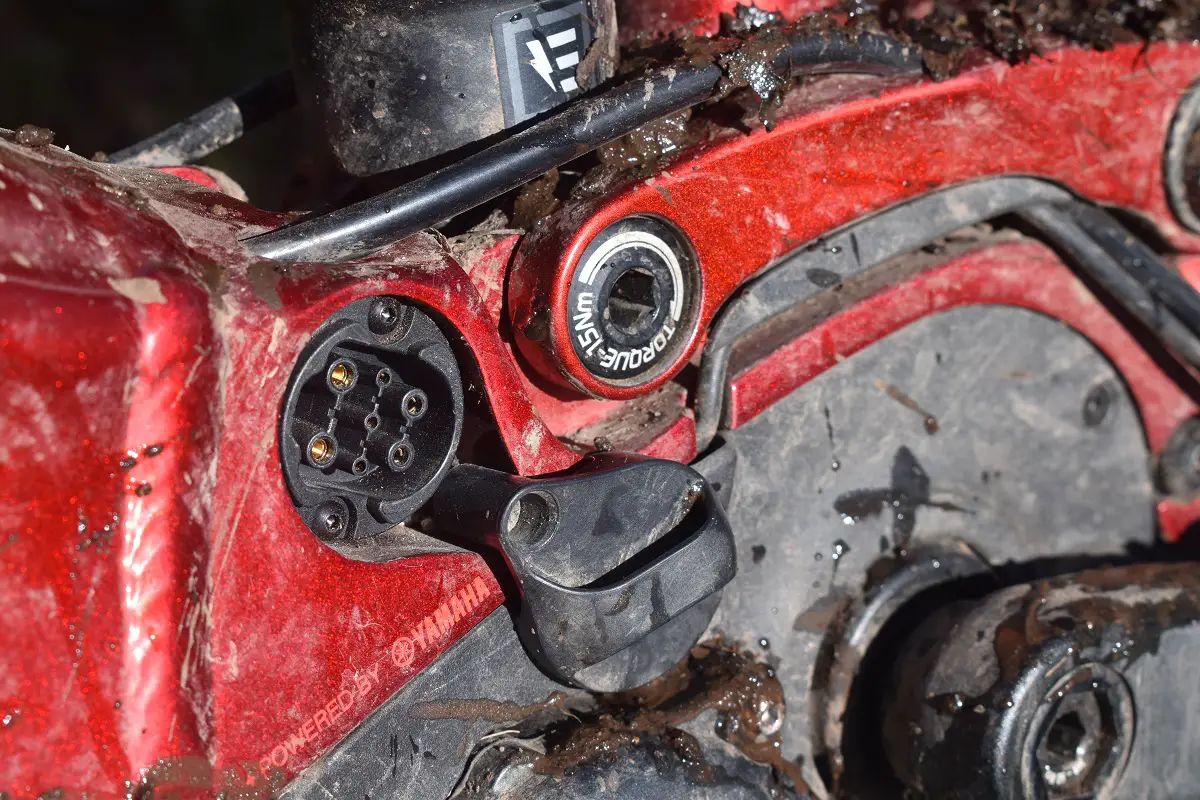
Jumping on the bike for the first time, I started fairly cautiously and deployed ECO mode (1 out of 5) which offers 100% assist. Pressing my foot on the pedal, I could feel a slight vibration through it, something common to all settings. It was something I got used to pretty quickly. Switching from zero to 1 is so quick that at traffic lights, I ended up switching to power assist only when I was about to set off. It is a little odd at first but is just a feature of the design and is not something to be particularly concerned by. With 100% assist on offer, I found myself using ECO for most of the time, both on and off road. Cycling through the power settings is really easy and goes all the way up to 360% in Power mode. However, even on longer, steeper climbs such as up Walna Scar from the Broughton side, setting 2 offered 175% assist which was more than enough for my needs. Setting 3 to 5 were pretty much redundant from a real world riding point of view.
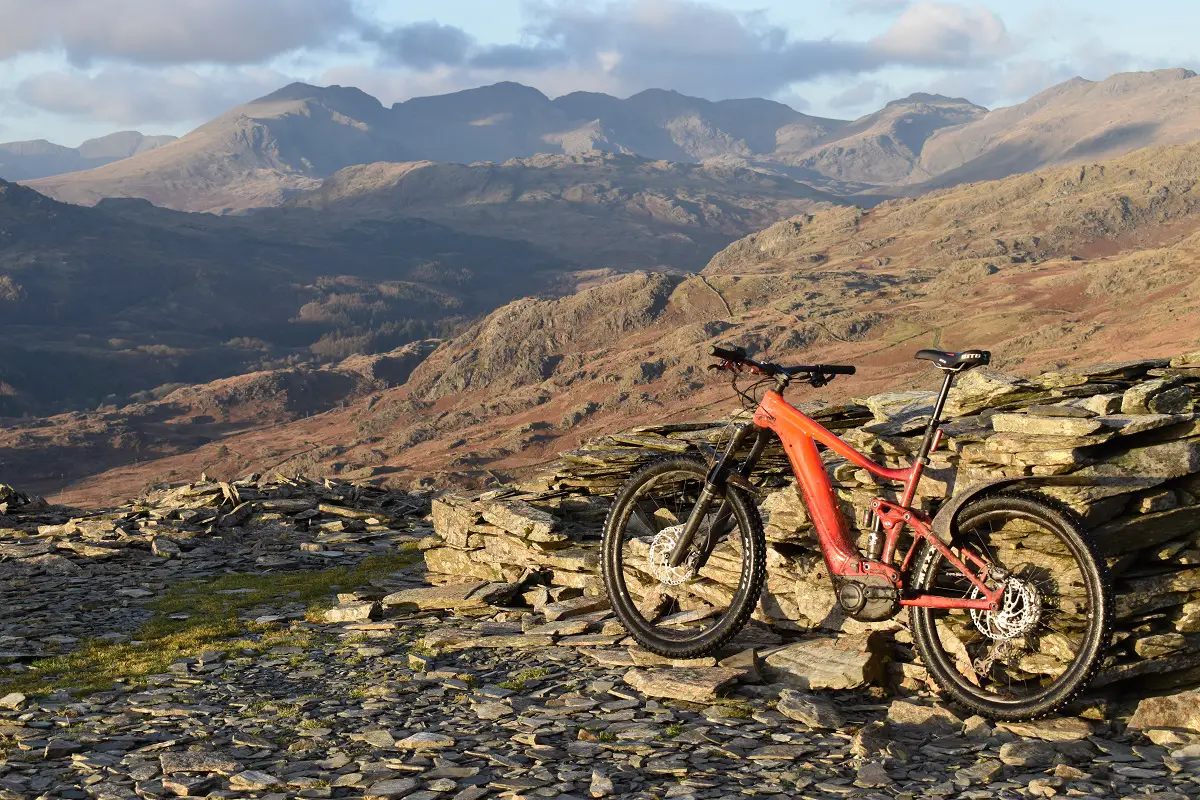
Of course, for the sake of testing I did up the power settings and as with pretty much every other ebike I have ridden, I began to feel more passenger than rider. The Power setting is a bit bonkers and makes even the steepest of hill feel like it is barely there. If you absolutely want to be the fastest up the hill, the Reign E+1 Pro will get you there first although the trade-off is, of course, reduced ride time. If you aren’t one for troubling your left thumb too much, Giant offer their SMART ASSIST technology. By depressing the lower button for a couple of seconds, the system then matches power delivery to match rider input and terrain. In simple terms, what this felt like was that the harder I pedalled and/or the steeper the terrain, the more power came from the motor. In practical terms, the power output felt like it was on setting 3 or 4 most of the time. On steep hills, it felt like someone was pushing me up, while on the flats I very quickly found myself hitting the limiting speed of around 15mph at which point it felt like the motor was in and out of power mode. While the feeling of speed was pretty intoxicating, battery life discernibly reduced. Moreover, the power delivery didn’t feel quite as smooth or controlled as in constant delivery mode. I suspect that this is very much just a personal preference on my part and am sure that many riders will love SMART ASSIST.
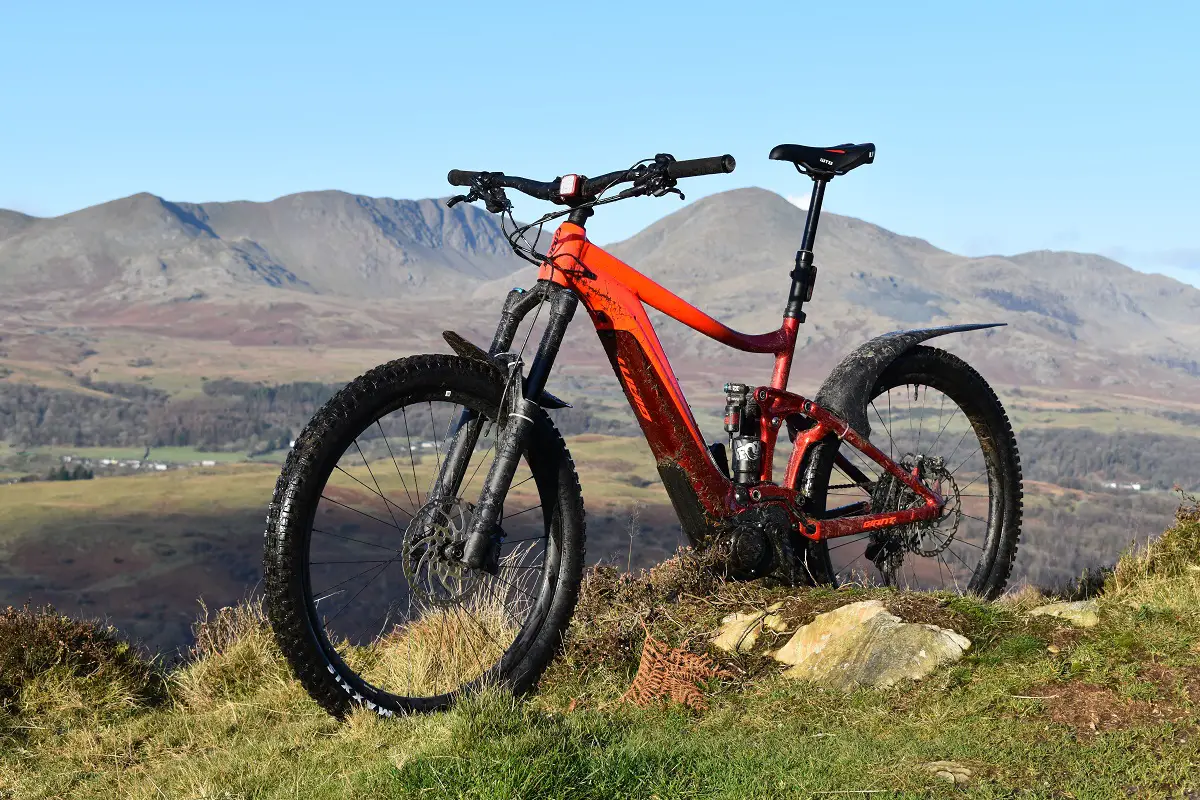
In terms of power delivery when the power level is constant, I found the Yamaha motor to be really smooth and coped well across a range of cadences from slower speed uphill winches to faster spinning. Giant claims that their system gives a smooth and natural feel to the Reign E+1 Pro and on this point, I think they are on the money.
More power, Scotty!
Not being one to do things by halves, I decided that the first big ride out should be on a Lakeland classic – Walna Scar. Of course me being me, I thought it wise / foolhardy to make it a proper ride and set out on a crisp but clear December Day from Ambleside taking in Claife Heights, Grizedale Forest, Parkamoor, some wonderfully flowy open fell trails south of Coniston before heading up the brute of a road climb that is Hummer Lane before passing through Stevenson Ground and eventually Walna Scar before heading back to base. It is a reasonably chunky ride for one of the shortest days in the year and I had no real clue as to how I would get on. Part of the fun eh? Switching the motor off for descents as to be frank, you just don’t need it on the downs, I spent most of the time in ECO mode, switching up to BASIC setting 2 (175% assist) for the trails around Coniston and up Walna Scar. Despite a little range anxiety early doors, the further I got, the more my confidence grew. By the time I was riding up Walna Scar, I only kicked down to 40% power remaining when I crested over the pass.
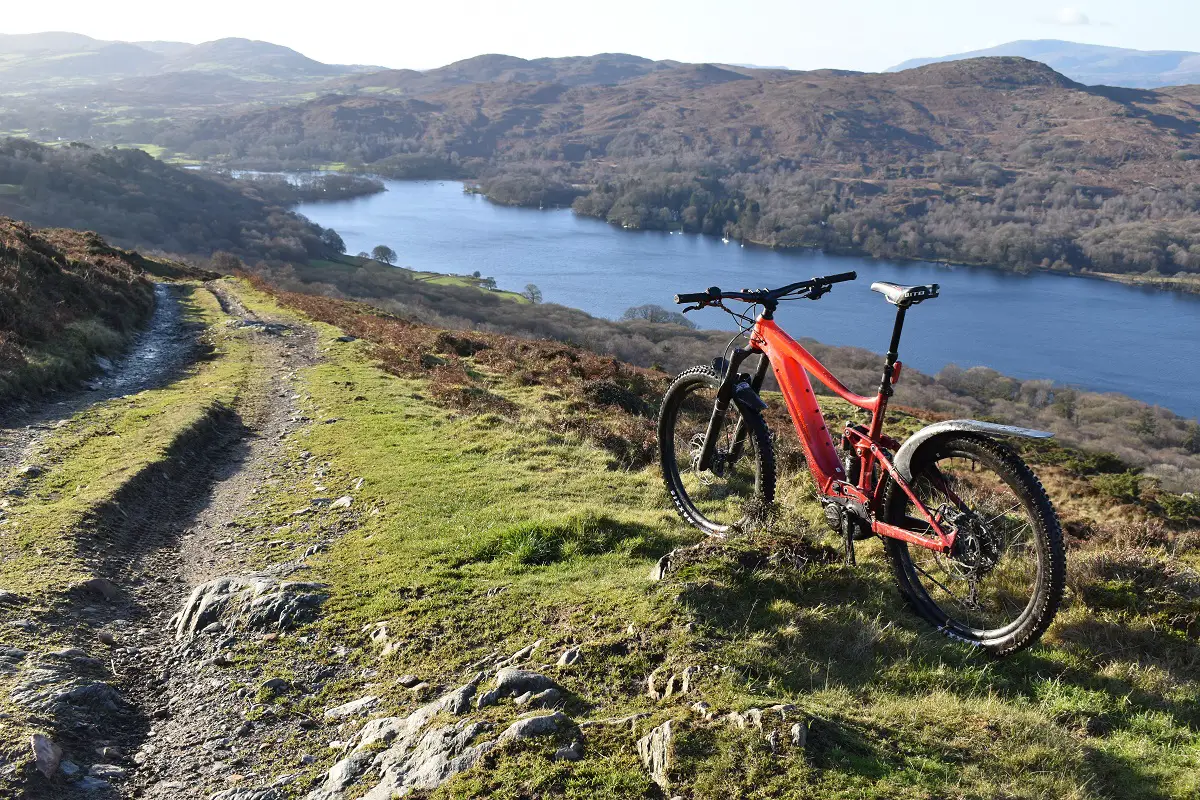
It was a pattern that was to be repeated on pretty much every ride since. Battery life on the Reign E+1 Pro is, to be blunt, excellent. I was mildly concerned that being an ebike that I would feel less inclined to tackle longer rides for fear of running out of power but that never proved to be the case. Case in point – a ride of some 50 miles down the Clyde Valley to get to Tinto Hill before riding to the summit of over 700 metres and back followed by a road blast of several miles to catch a train home saw me arrive at the foot of the hill with still over 60% battery life left. To be fair, I happily disengaged the motor when I had a tailwind and on slightly downhill sections to conserve power for the climb but it just proves that with a bit of common sense, you can really exploit the range potential of the Reign E+1 Pro.
Up, up and away
Whenever the trail turned upward, I relished what the Giant was capable of helping me get up. The long wheelbase and low front end coupled with the smooth power delivery meant that I was able to power up both steep and technical thrutchy climbs and long granny gear grinders. Only when the trail turned really steep and long did I start to wish for a smaller front ring. By nature, I am a spinner thus relying on the motor to do more of the work doesn’t necessarily come naturally to me. On a couple of occasions, as much to conserve power as anything, I would have preferred a 34t or even a 32t ring up front. However, I recognise that for the vast majority of riders this is never going to be an issue as they will just up the power output.
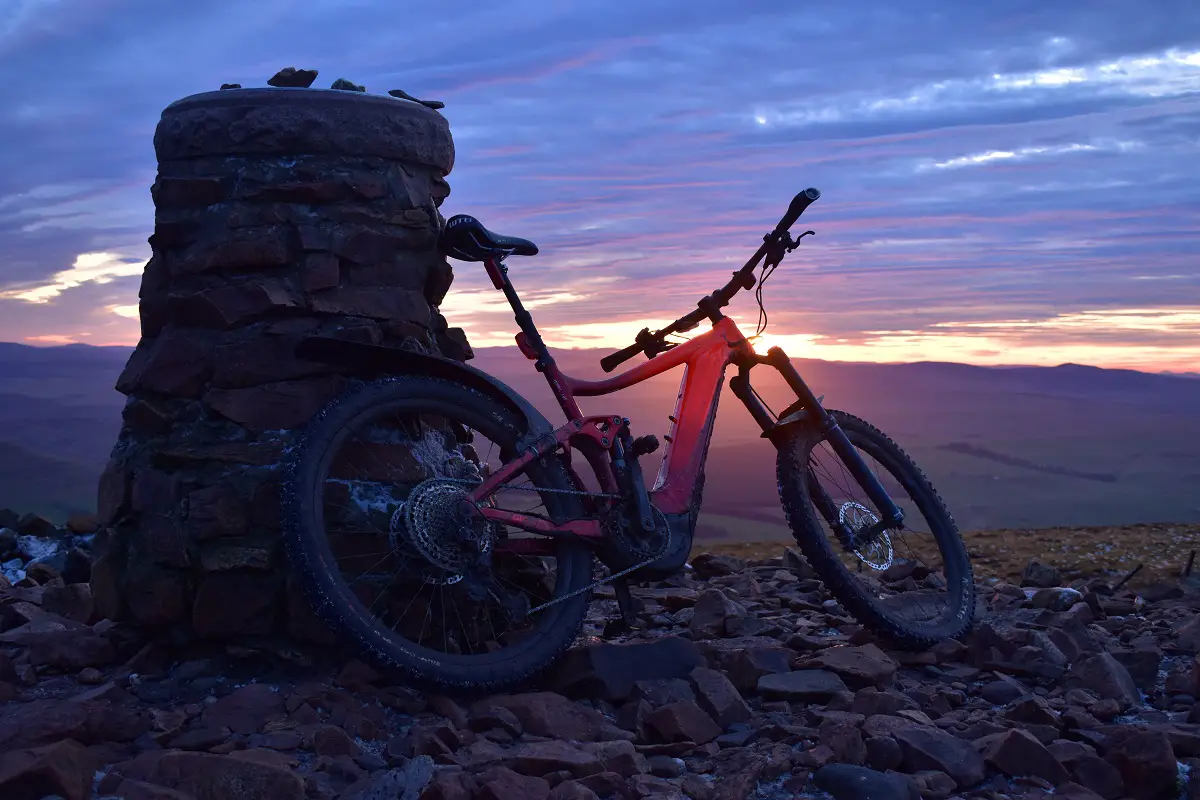
What goes up must come down
Descending wise, on paper at least, the Reign E+1 Pro promises to be right up there with the best of them. However, I struggled to find myself truly comfortable with the bike. At 6 foot 1, I am a large according to Giant’s sizing chart. As a predominantly 29er rider, I like a set up where there isn’t too much of a drop between the saddle and the handlebars. If you have a look at the pictures of the test bike side on, you will see that there is a drop of almost three inches between the top of the saddle and the top of the bars. To counter this, I set the stem at the highest setting but still found myself riding what felt a little more akin to a racy XC position than one best suited to tackling steep and challenging trails. On the flat and on climbs, it didn’t cause me issues but when the trail turned downwards, I began to struggle a little. Heading down Garburn Pass into Kentmere, I found that the long back end coupled with the low front end made it challenging for me to lift the front end and manual through. Instead of finessing down the trail, I found myself somewhat crashing through it, try as I might to do otherwise. In the end, I just had to back off and go slower than I wanted. In the real world, if this was my bike, I would have swapped to a higher rise set of handlebars though would prefer there simply to be a bit more steerer tube to play with from the off. Cutting down a steerer tube is easy, putting it back on less so.
However, the bigger challenge came with the position of the motor. Riding around the red, black and Enduro trails at Glentress with my friend Geordie Mark (he being on a 29er Mondraker E bike), I lost count of the number of times that the motor casing smacked into the edge of step downs and exposed root drops. While Mark floated over stuff with ease, despite matching his speed and line choice, I managed to find what felt like every trail obstacle and clatter into it. On a positive note, the substantial downtube protector did a good job of preventing the frame and motor for being damaged. However, it was something that I experienced on several other rides, even riding down a flight of stairs, and ultimately I found myself taking less technical lines than I would normally. With sag set at between 20% and 25%, the Reign felt the motor was riding too low to the ground so I ended up reducing it for the rest of the test in order to counter the effect.
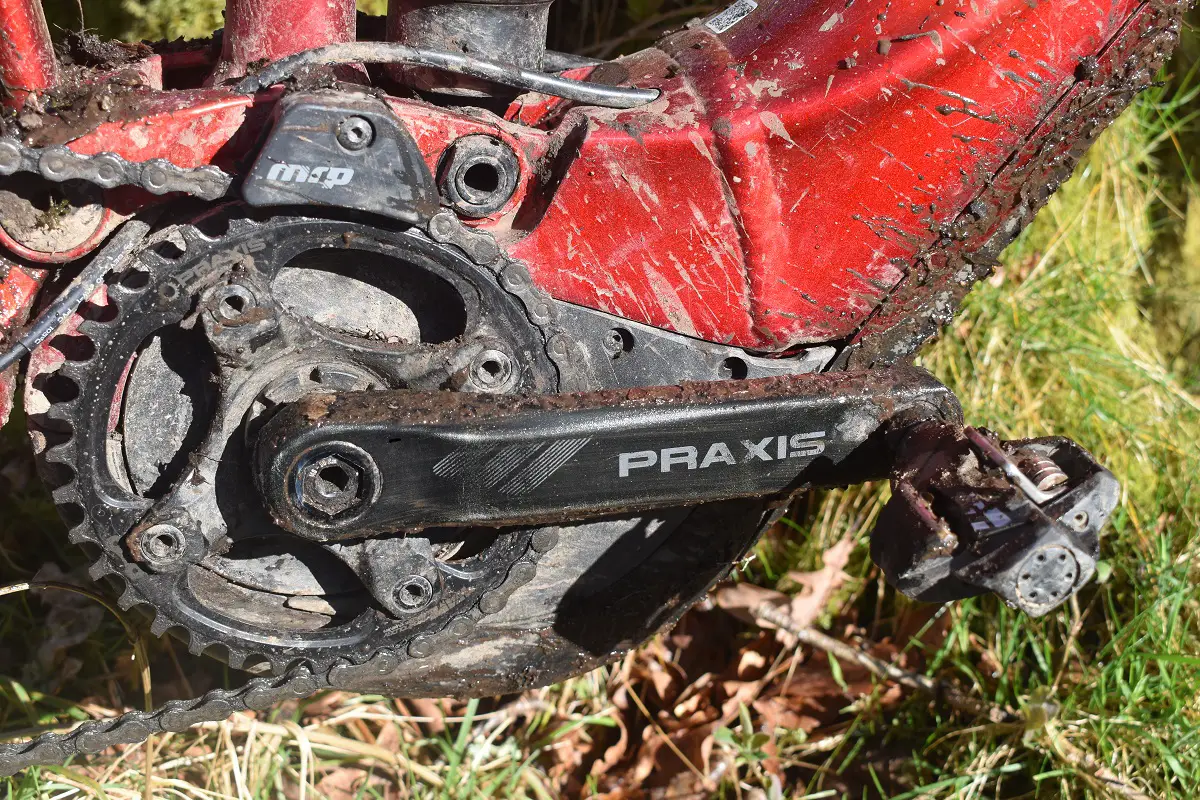
I suspect the Reign E+1 Pro requires much more attention to be paid to shock set up than other ebikes I have ridden. By the end of the test, I had gotten closer to finding it but am not convinced that I hit the sweet spot.
Hitting the smoother, flowing trails of the red, the Reign E+1 Pro took a little bit of handling to rail round the corners. The long wheelbase makes for a terrific climbing bike but this comes at the cost of flickability in the corners. I found myself scoping each line with a bit more care than normal in order to get the best out of it.
Riding beyond the limit(er)
Exceeding 15.5 mph on the road to and from the trail, I soon came to realise that the Giant is not a bike to be pedalled without power unless with a tail wind or downhill. When the motor cuts out, you really feel the effect of the extra timber that it carries. It’s like riding an exercise bike where somebody throws a switch and ups the resistance to maximum. Similarly, out of the saddle sprints aren’t a wholly pleasant experience so I soon learned to stay seated and take advantage of the power on tap. It is after all an e bike whose forte is off road riding. I have yet to ride an e bike for an extended period on the road where exceeding the limit feels just like a normal bike.
The non-electric bits
So what of the rest of the bits? As I made reference to earlier, I really rate the wheelset. Despite not being made of on trend carbon, the wheels proved utterly reliable in every way. They just did the job they were meant to with no fuss or fanfare. The bars, grips and stem worked really well as a package meaning no sore arms or shoulders. The 4 pot XT brakes were plenty powerful although by the end of the test, the rear brake was pumping up on long descents and was in need of a re-bleed.
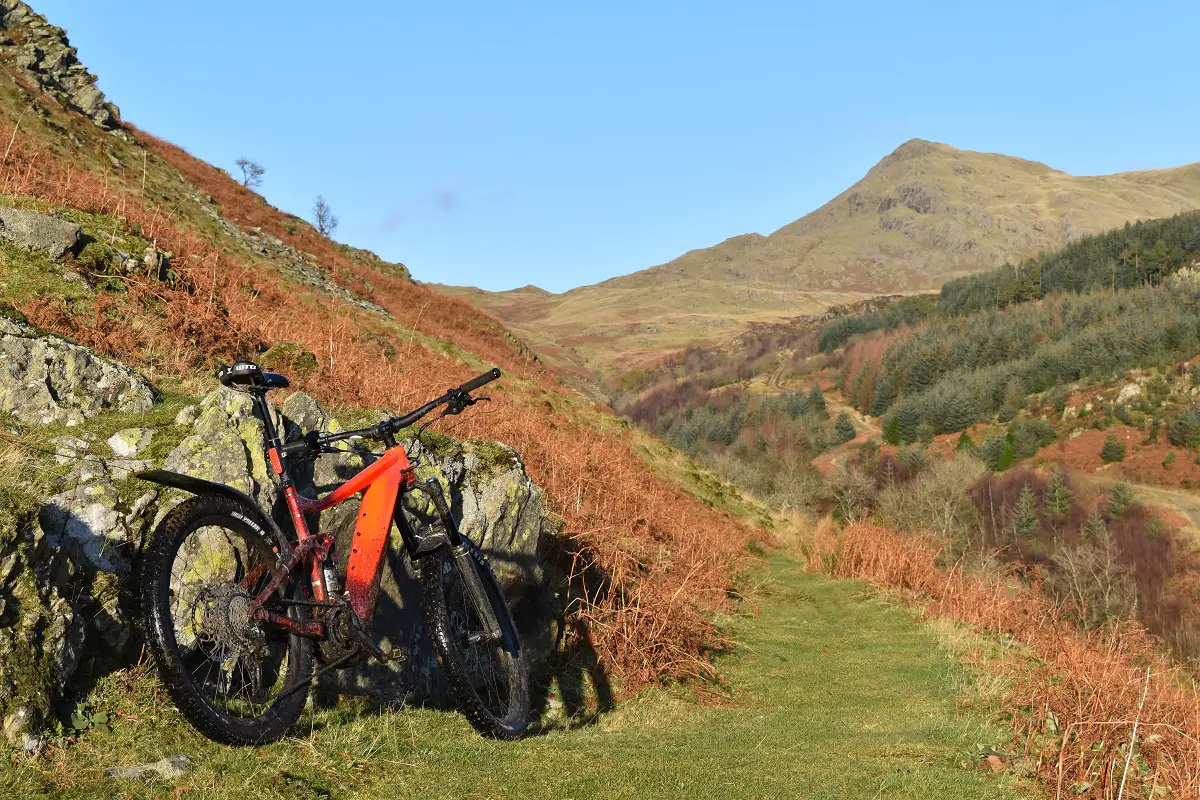
As for the 12 speed Shimano drivetrain (a mix of XT mech and shifter, SLX cassette and KMC E bike specific chain), I am probably going to go against the flow and say that I was a bit underwhelmed by the way it performed, in this guise at least. I make no secret that I have long been a Shimano fan and would normally prefer it to SRAM. I like the way it feels and the fact that the shift lever doesn’t move in a single forward plane only. I really appreciate being able to shift down with my index finger. However, in mud (and there was a fair bit of it on test), it graunched and grinded to such an extent that on a couple of occasions, I had to stop riding to check that I hadn’t broken the motor or wheel bearings. A bit of trailside re-lubing improved things but only a proper clean back at Sanny HQ appeared to fix it. In less than a month of riding, the chain had already worn down by 50%. By the start of the third month, it was more than 75% worn and in need of being replaced. Eek! It could be that the mix and match Shimano and KMC 12 speed set up, motor power, Scottish mud and my riding style simply aren’t compatible. On four separate occasions , I experienced the tell-tale slip of what I would normally think is the free hub about to give up the ghost. However, whether it was the free hub or the motor, I couldn’t say for sure. The bike kept going but it would be something I would definitely want to keep an eye on in the longer term.
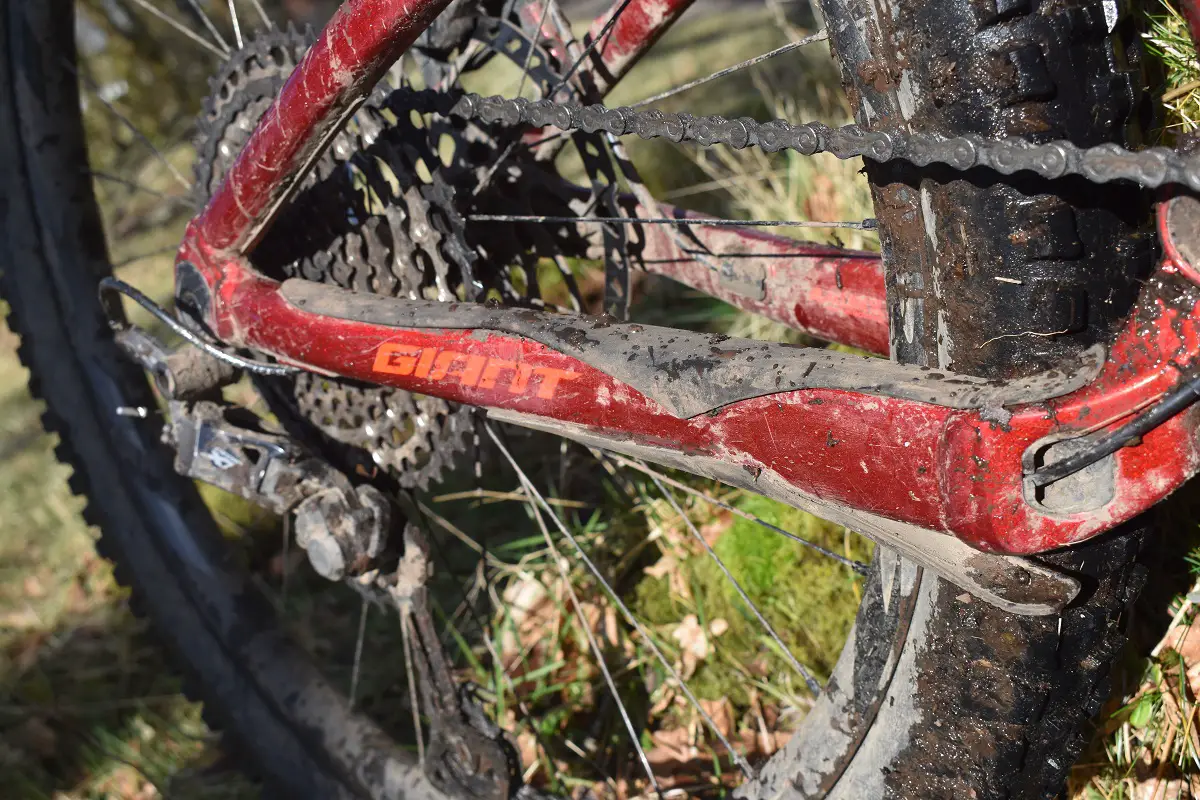
Maestro suspension
Despite not quite hitting the sweet spot when it came to getting the optimal suspension set up to minimise rock strikes, I found the Maestro suspension system to be as good as I remembered it from my time on the old Trance X 29er even though I ended up running it firmer than I would have liked. It manages that winning combination of subtlety, plushness and efficiency. For the most part, I never noticed it which in my book is pretty much what I want from a suspension system. I just want it to be efficient on the climbs and plush on the descents and it certainly achieved that. There is a good reason why the basic design has lasted for so many years.
Three things we liked:
- Class leading battery power.
- Accomplished climber that can get up almost anything you can throw at it.
- Nice motor action over all cadences.
Three things we would improve:
- Low slung motor position renders it vulnerable to ground strikes.
- Front end could benefit from being raised for more aggressive riders.
- A shorter wheelbase would make for a more playful ride experience.
Overall
When it comes to climbing ability, power delivery and battery life, Giant has definitely upped its game. There is an awful lot to like about the Giant E+1 Pro. Battery life is class leading while despite not being the quietest on the market, the Yamaha motor did a lot to impress me. I took the bike on some long cross country and big mountain rides that would almost certainly have pushed other systems to the very limit of their ranges and most likely beyond them. The Maestro suspension system is a proven and capable performer but requires careful set up when mated to an ebike platform. Giant’s own brand finishing kit is universally excellent. However, the low front end, the long wheelbase and low slung position of the motor meant that, for me at least, I could never get entirely comfortable on the type of trails I like to ride. There will be riders out there who will no doubt love this machine but in this guise, it needs a few tweaks for it to be the bike for me.
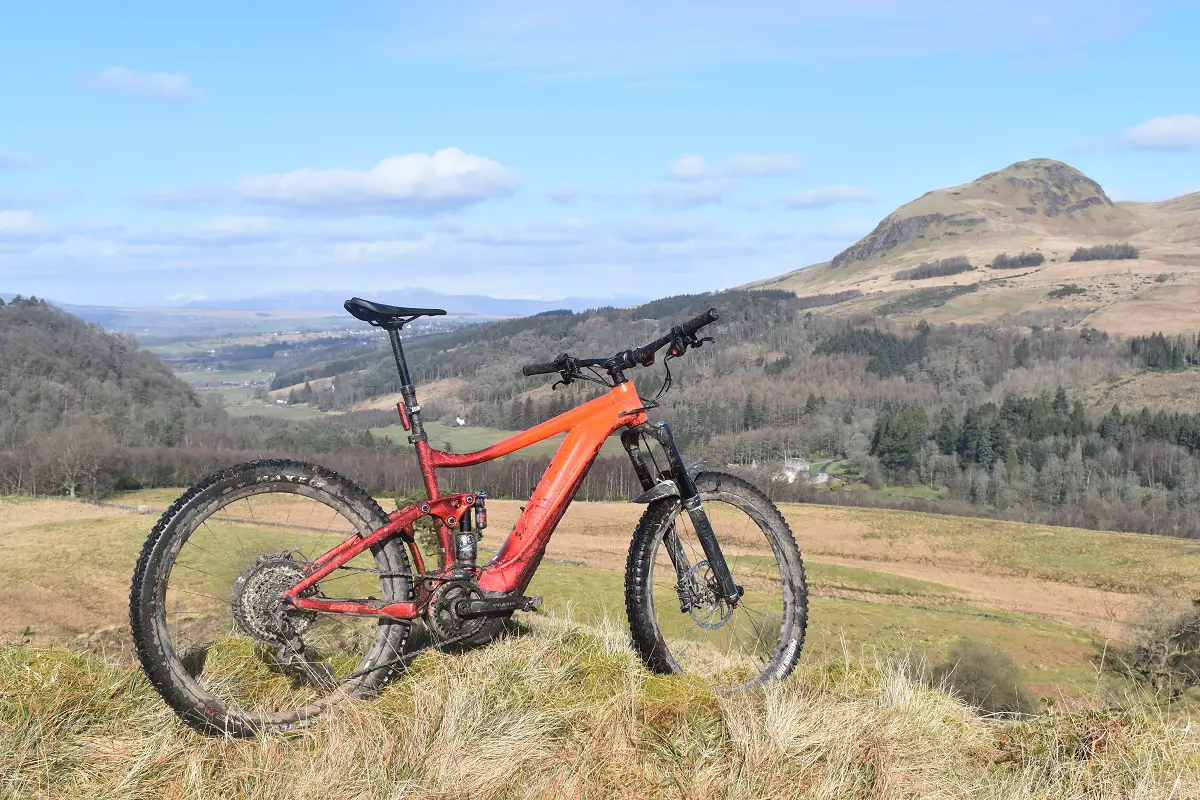





I think the meaning of “XT thumb shifter” must have changed in last 25 years without me noticing!
You still shift with your thumb so thumb shifter it is! Ha! Ha!